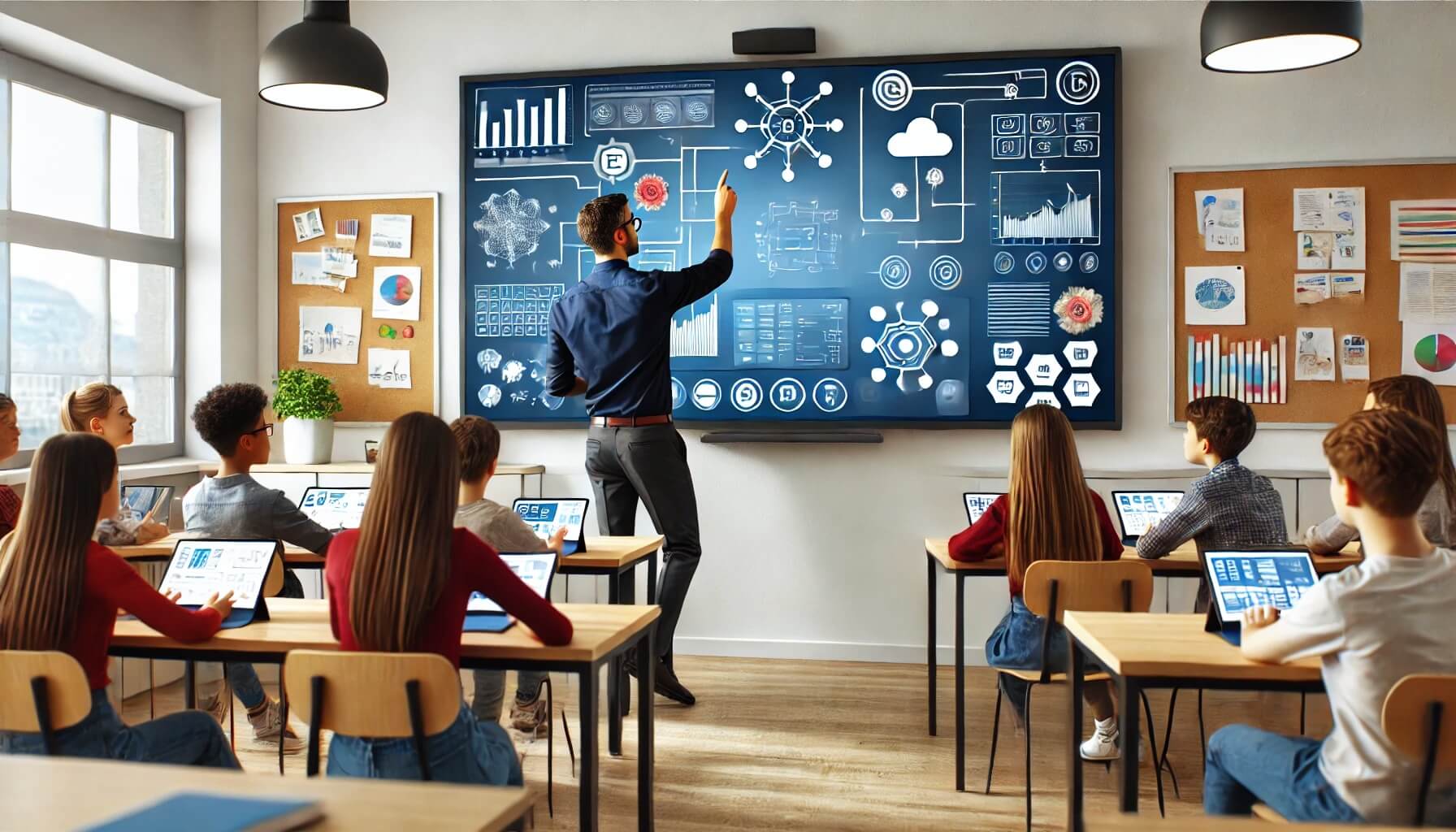Education requires technology as a fundamental necessity during the current high-speed era. Digital knowledge-sharing technologies produce more educational opportunities through their student-focused educational methods. Digital libraries hold essential value for education because they provide students and teachers with a broad knowledge base. Mintbook operates as an educational transformation system that provides numerous academic resources. This blog post discusses the significance of digital tools, especially digital libraries, and how Mintbook influences the future of learning.
The Rise of Digital Tools in Education
The educational methods have gone through substantial changes during recent times. From traditional chalk-and-board classrooms to online learning platforms, the integration of digital tools has made learning more dynamic and interactive. Some of the key digital tools that have gained popularity include:
- Learning Management Systems (LMS) – LMS systems supply teachers with efficient methods to handle courses and track assignments along with evaluations.
- Educational Apps – Apps such as Duolingo, Khan Academy, and Coursera provide interactive learning experiences tailored to different subjects.
- Digital Libraries – Mintbook creates a digital platform featuring extensive e-book additions and academic resources across research papers to replace traditional physical library limitations.
- AI-Based Learning Assistants – Artificial intelligence-powered tools such as chatbots and virtual tutors provide real-time assistance and personalized
- Gamification in Education – Students learn through attractive educational tools of Kahoot! and Quizizz which provide fun quiz-based gameplay.
Digital libraries stand as one of the most influential educational tools since they offer students instant access to all knowledge contained in the world.
Digital Libraries: The Future of Learning
A digital library is an online repository of books, research papers, academic journals, multimedia resources, and more. Unlike traditional libraries, which require physical access, digital libraries provide on-demand access to a wealth of information from anywhere in the world.
Benefits of Digital Libraries
1. Accessibility and Convenience
A digital library eliminates physical boundaries by giving students and educators unrestricted access to resources through any possible time and location. Students benefit greatly from remote learning along with self-paced education because of this feature
2. Cost-Effectiveness
The operation of physical library spaces requires massive costs to build and sustain infrastructure and maintain acquisition of resources. As a digital library operates more sustainably it proves less expensive than printed books and their associated maintenance costs.
3. Vast and Updated Knowledge Repository
Unlike traditional libraries, which may have limited space, digital libraries can store an extensive range of resources. Additionally, they are regularly updated to provide the latest information on various subjects.
4. Interactive and Multimedia Resources
The interactive features within digital libraries that use videos audio lectures and simulations help students learn more effectively because they enhance engagement
5. Searchability and Organization
With advanced search filters and categorization, digital libraries allow users to find relevant content quickly. This saves time and enhances learning efficiency.
6. Collaborative Learning
Digital libraries promote knowledge sharing and collaboration among students and educators through discussion forums, shared reading lists, and study groups.
Mintbook: A Game-Changer in Digital Learning
Mintbook emerges as the premier digital teaching platform because it successfully unites learners with top-quality instructional content. The digital learning system represents a complete ecosystem that delivers all the following features:
- A Digital Library with a vast collection of books, research materials, and study
- An AI-Powered Learning Platform that customizes content based on the learner’s
- The platform enables users to monitor development through its analytical tool for enhanced educational results.
- Interactive and Engaging Content such as videos, quizzes, and gamified learning

Why Educators and Students Love Mintbook
1. Comprehensive Learning Resources
Mintbook’s digital library covers a wide range of subjects, from science and mathematics to arts and literature, ensuring that students have access to high-quality educational materials.
2. Personalized Learning Experience
With AI-based suggestions, students get content that suits their learning pace and interests, making learning more efficient and fun.
3. Seamless Integration with Curriculums
Mintbook supports academic curriculums thus becoming an essential tool for educational institutions ranging from schools to colleges and universities.
4. Safe and Secure Platform
Unlike open web resources that may contain unreliable information, Mintbook provides verified and credible educational content.
5. Offline Accessibility
The standout feature of Mintbook enables students to access educational materials offline so they can learn at any time.
Digital Tools for Teaching and Learning in the Post-Pandemic Era
Education institutions used digital tools at an accelerated rate because of the COVID-19 pandemic. Education institutions across the globe transformed their operations to online learning which made digital libraries and LMS platforms as well as e-learning applications essential assets. Even as traditional classrooms resume, digital tools remain an integral part of modern education.
Here’s how digital tools continue to reshape teaching and learning:
- Hybrid Learning Models – Combining online and offline learning increases flexibility and accommodates varied learning styles.
- AI and Adaptive Learning – AI-based systems tailor educational experiences, enabling students to understand intricate ideas at their own speed.
- Virtual Reality (VR) and Augmented Reality (AR) – Engaging learning experiences through VR and AR improve comprehension and memory
- Cloud-Based Education – Cloud services provide smooth communication channels for instructors to work together with their students which ensures students can retrieve school materials remotely

The Role of Educators in Adopting Digital Tools
Though digital tools have many benefits, their success lies in how teachers incorporate them into the classroom. Below are some tips for educators:
- Blend Traditional and Digital Methods – Merging textbooks with digital materials guarantees a well-balanced method of learning.
- Promote Collaborative Learning – Utilize digital resources to enhance discussions, group assignments, and peer-based learning.
- Encourage Digital Literacy – Instructing students on the responsible use of digital tools improves their research and analytical abilities.
- Utilize Analytics for Improvement – Sites such as Mintbook offer student progress insights that can be used by teachers to improve their pedagogy.
- Keep informed on EdTech Trends – The world of digital education is changing rapidly, and being current with new tools can make a teacher more effective.
Conclusion
Digital Tools for Teaching and Learning are transforming education by enhancing its accessibility, interactivity, and customization. Digital libraries play a crucial role in this, offering numerous resources to students and teachers
Platforms like Mintbook are driving this change by offering a complete learning environment designed for modern learners. With features such as AI recommendations, interactive content, and integration with curriculums, Mintbook is raising the bar for digital education.
With the evolution of technology, digital tools will be necessary to create an inclusive and efficient education system. Students, teachers, and institutions can gain from utilizing platforms such as Mintbook to maximize learning and teaching opportunities.

